Description
Come live one of the most exciting and enriching adventures you can experience in your life: the Inca Trail
This ancient trail, which stretches for more than 40 kilometers through the Peruvian Andes mountains, is one of the most popular hiking trails in the world and one of the wonders of humanity’s historical heritage.
During this trip, you will have the opportunity to walk through the same steps that the Incas walked centuries ago to reach the sacred city of Machu Picchu, a mystical place full of history.
Along the way, you will enjoy spectacular landscapes, from snowy mountains to green valleys and crystal clear rivers, you will have the opportunity to meet the local people and immerse yourself in their ancestral culture.
Get ready for a unique and unforgettable adventure in the heart of the Peruvian Andes.
Itinerary
Day 01: Cusco to Wayllabamba (12km)
The first day of walking is relatively easy and serves as training for the following days. We will pick you up early at your hotel, between 5:00 and 5:30 in the morning, we will travel by vehicle passing through the picturesque towns of Chinchero, Urubamba and Ollantaytambo, continuing our 2-hour scenic drive to kilometer 82 (the beginning of the trail).
We will stop in the town of Ollantaytambo in the Sacred Valley for about an hour so that we have the opportunity to have breakfast.
The start of the Inca Trail is at km 82, once we reach km 82, we will cross the Vilcanota River and continue on our way as we ascend the path steeply from the river. After passing through a small town, we will see the ruins of the Inca castro of Huillca Raccay from where we will be able to appreciate from the top of the mouth of the Cusichaca river (‘happy bridge’).
The Incas, when they conquered the area, built a fort here as the site commands an excellent view up and down the Urubamba valley, thus controlling the entrance to the Cusichaca valley. We will make a simple descent to the river of the same name.
From some points of this trail you will enjoy excellent views of the Urubamba Mountain Range and the Veronica snow-capped peak (5,860m). You’ll also get a good view of the extensive Inca ruins of Llactapata (also known as Patallacta on some maps). Llactapata means ‘high town’ in Quechua and was first discovered by Hiram Bingham in 1911. It was mainly an agricultural station used to supply Machu Picchu with corn, the staple crop of the Incas.
For another 7 km we will continue our path bordering the left side of the river to the small town of Wayllabamba (3,000m). The name in Quechua means ‘grassy plain’. We will probably spend the night here depending on the speed of the group. This is the last place along the walk where you can buy snacks and drinks.
Day 02: Wayllabamba to Pacamayo (12km)
We start a steep climb up to the first pass (4200m). Going up from Wayllabamba following the left bank of the Llulluchayoc river for about an hour.
Later we will arrive at ‘Tres Piedras’ and a small bridge over the Huayruro river. Where we will find a campsite with sanitary facilities. The stream bears the name of the Huayruro which is an ornamental tree. Its seeds are red and black.
Many of the porters in the Ollantaytambo district are also known as Huayruros for their traditional red and black ponchos! A little further on, we enter a beautiful cloud forest where we will find a waterfall.
After three more hours of walking through rugged forests and increasingly spectacular terrain we will arrive at a line of trees next to a meadow known as Llulluchapampa (3,680m).
We will continue our trail for another hour and a half of ascent to the first and highest pass of the trail (Abra de Huarmihuañusca or ‘Paso de la Mujer Muerta) at about 4,200m. During this part of the trail, we will be exposed to the Andean elements: first a scorching sun, then closer to the pass icy winds.
Once at the top we can celebrate having completed the most difficult section of the trail.
The descent from the pass is steep but not difficult, following the path on the left side of the valley to the camp where we will spend our second night in Pacamayo (3,600m). This place has sanitary facilities.
Day 03: Pacamayo to Wiñay Wayna (16km)
We will leave the Pacamayo camp behind, after climbing for about an hour, we will reach the ruins of Runkuracay. These small circular ruins occupy a commanding position overlooking the Pacamayo Valley.
After about 45 minutes of walking, we will reach the top of the second pass: Abra de Runkuracay (4,000m). At last you will feel that you are walking the path of the Incas. The descent down the steps from the pass is steep, so we need to be careful.
This section of the trail, up to the third port, is particularly beautiful as the path crosses high stone embankments and skirts deep precipices.
After about an hour of walking from the second pass, we will reach Sayacmarca via a magnificently designed stone staircase. The name Sayacmarca means ‘Inaccessible Town’ and perfectly describes the position of the ruins, protected on three sides by sheer cliffs. No one knows the exact purpose of these ruins.
We will have to go back a bit to return to the path that passes through Conchamarca, a small Inca dwelling located in the shadow of Sayacmarca, which was probably a tambo (resting place) for weary travelers on their way to Machu Picchu.
From this point the path descends towards a magnificent cloud forest full of orchids, hanging mosses, tree ferns and flowers, passing through an impressive Inca tunnel carved into the rock.
After continuing along the path we will go up to the third pass (3,700m). From this height we will be able to appreciate the excellent views of several snow-capped peaks, including Salkantay (6,180m) and Veronica (5,750m).
A few minutes after the pass is Phuyupatamarca, the most impressive Inca ruin to date. The name means ‘Town in the Clouds’. Access to the ruins is by a steep flight of stairs that passes through six ‘Baños del Inca’ probably used for the ritual worship of water.
Leaving the site via an impressive Inca stairway that leads from the west side of the ruins (the far end of the baths), you descend about a thousand steps. Be careful with your knees that will feel the tension at the end of the day.
After about an hour of walking through the cloud forest, we may only be able to see the tin roof of the Trekkers Hostal in Wiñay Wayna (no longer available), although it probably won’t be for another 2 hours until we arrive.
Wiñay Wayna is the last official camp before Machu Picchu.
A short trail leaves from the southern end of the hostel to the ruins of Wiñay Izquierdo. The name means ‘forever young’ in Quechua and is named after a variety of pink orchid.
The ruins comprise magnificent agricultural terraces, there are also many stonework buildings in very good condition and a sequence of 10 baths, suggesting that the site was probably a religious center associated with the cult of water. Ritual cleansing may have taken place here for pilgrims on the final stretch of the road to Machu Picchu.
Day 04: Wiñay Wayna to Machu Picchu (5km), Return to Cusco
The path from Wiñay Wayna to Machu Picchu is clearly marked and takes about an hour and a half to two. We will wake up early at 4:30 in the morning, have breakfast and start the road again at 5:30 to reach Machu Picchu before sunrise.
The sky begins to clear at 5:30 in the morning and the first rays of the sun arrive at Machu Picchu around seven. The trail skirts the side of a mountain and drops into cloud forest before reaching a nearly vertical flight of 50 steps that leads to the final pass at Intipunku (Sun Gate).
Without realizing it, all of Machu Picchu stretches out before us in all its splendor: a fantastic sight that you will never forget.
When we arrive at the ruins, we will have plenty of time to take photos of Machu Picchu from the classical point of view. When the group reconvenes, we descend at the main entrance where we can safely leave our large backpacks.
We will also have time to go to the bathroom and have a quick coffee in the restaurant at the entrance. The group will re-enter the ruins with the same guide for a complete tour of the main sectors.
The tour lasts about two hours, so after the tour we will have some free time to explore the ruins by ourselves.
Then, we will take the bus that will take us to the town of Aguas Calientes about 30 minutes away where we can have lunch, there are several small restaurants in Aguas Calientes to satisfy all tastes and budgets.
You may also want to pay a visit to the city’s famous hot springs which feel great after you’ve completed the trail. The entrance to the springs is not included and has a value of approximately USD$5 and allows you 2 hours to enjoy the hot springs.
Later we will board the train at the indicated time from Aguas Calientes to Ollantaytambo (time may vary depending on ticket availability) and it will take us back to Cusco. Our standard service includes the tourist bus from Machu Picchu to Aguas Calientes, return by train from Aguas Calientes to Ollantaytambo where we will be picked up and taken back to Cusco.
Detail
| Included |
|---|
| – Pre-departure briefing: Our tour guide will meet at your hotel to give you an orientation or a briefing on the trek to Machu Picchu. The meeting will be at 6:00 pm the day before the start of the trip. – Transportation: Pick up at your hotel in the morning and transfer by private vehicle to Km 82 (starting point of the walk). – Experienced guide: Official, English-speaking, professionally trained tour guide. Your guide will explain the culture and environment throughout the tour. He or she will keep you safe, healthy and comfortable on your trip so you can enjoy your time without worries! – A personal porter to carry 6 kg of your personal belongings. – Personal tents: Like our ancestors, we are very considerate of Pachamama (Mother Earth). For this reason, our campsites are adapted to the environment so as not to generate negative impacts. 2 people stay in each 4-person tent to allow for greater comfort and luggage safety. Our tents are ready for 3 seasons and are highly maintained to ensure excellent performance during our hikes. – Camping equipment: Dining and kitchen tents, tables, chairs and all kitchen equipment (carried by porters). – Mattress or mats: to put under your sleeping bag – Accommodation: 3 nights in tent – Trekking cook: a chef specialized in cooking on the road, with an assistant, will prepare all your delicious meals along the trip to replenish energy. You will never go hungry! – Meals: 3 Breakfasts, 3 Lunches, 3 Dinners and Snacks (Vegetarian, vegan or special menus available at no additional cost) – Wake up tea: Every morning in the camp, you will wake up with a cup of coca tea! Our staff will bring the tea to your tent to warm you from the inside out before starting your day. – Tea time: Every afternoon before dinner, the cooks will provide you with popcorn, cookies, coffee, hot chocolate, teas, hot water, etc. After a long day of hiking, you won’t have to wait until dinner to relax, warm up and enjoy a bite to eat! – Medical kit: our crew will bring a first aid kit, including an emergency oxygen bottle. – Train tickets: From Aguas Calientes to Ollantaytambo “Expedition” service with Peru Rail or Inca Rail (subject to availability) – Transportation: Transportation from the train station to the city of Cusco (Day 4) – 24-hour guest service: We have a telephone service available 24 hours a day to facilitate communication and preparation with the agency before your walk. |
| Not included |
|---|
| – Sleeping bags: You can rent one from our company if you don’t have your own. Our sleeping bags are effective and durable in protecting from temperatures as low as -18ºC (0ºF). They are shaped like a mummy and include a sleeping liner. The bags are cleaned after each use and have a maximum use of 30 trips. – Walking sticks: you can rent a set from our company if you wish. – Last Day: Lunch and Dinner in Aguas Calientes – Extra Porter: For your personal things – Clothing and personal equipment – Travel insurance – Tips for our staff: keep in mind that our agency staff are well paid, so feel free to tip or not as you wish. – Additional costs for delays beyond management’s control (landscape, bad weather, itinerary change due to security issue, illness, government policy change, political unrest/strike, etc.) Flights – Travel insurance – Accident insurance – Food not mentioned – Transfers not mentioned – Services not mentioned – Tips – Tickets not mentioned |
FAQ
Can I store my luggage in the office?
Of course! During your trek to Machu Picchu, your main luggage can be stored in our office or in your hotel, both are free. Don’t pack everything, just pack the things you’ll need for your hike.
What about altitude sickness?
In general, if you exercise regularly and spend a couple of days in Cusco or the Sacred Valley to acclimatize to the altitude, you may be fine. The recommended medicine for altitude sickness is WATER, COCA TEA and OXYGEN (if needed). Our guides are trained to treat altitude sickness. We offer the Cusco City Tour or Sacred Valley Tour that you can book while you acclimatize. Check our day trips.
Will we be dropped off at our hotel after our hike?
Absolutely! Included in our packages is leaving you at your hotel when you return from the tour. If you have booked your hotel in the Sacred Valley like Ollantaytambo or Urubamba, we can also drop you off there!
If you spend the night in Ollantaytambo before the trek, we can pick you up there.
Is it possible to climb the mountain of Huayna Picchu once the Inca trail has finished?
Of course yes, to carry out this activity immediately after finishing the Inca trail you should consider being prepared and obtaining the entrance tickets for the climb, we recommend that you consider Aguas Calientes one more night and climb the next day to have more energy.
What to bring to the Classic Inca Trail program?
– Original passport (the same one used to book your trip).
– Water storage: 2-3 L (Camelback recommended).
– Comfortable hiking boots with ankle support and comfortable camping shoes.
– Cold-resistant sleeping bag (if you don’t have one you can rent one with us for USD$25 for the entire circuit).
– Flashlight.
– 2 T-shirts and 2 hiking pants.
– 4 sets of underwear and 3 sets of hiking socks.
– Thermal clothing, warm clothing, down jacket (in the 2nd camp, the temperature is around 3º C) and rain gear.
– Hat and waterproof gloves.
– Quick drying towel.
– Small bottle of soap: we provide warm water every day for washing.
– Battery charger (there is no electricity throughout the walk).
– Extra small backpack (from 30 to 40 L) for hiking during the day. The entry of a large backpack to Machu Picchu will not be allowed.
– Water: Please provide your own water until the lunch spot on the second day, then we will provide you with cold boiled water at each meal. Please bring your canteens.
– Sun hat and sunscreen.
– Snacks such as chocolate bars, cereal bars or any dried fruit – coca leaves.
– Camera or phone for your photos.
– Extra money for souvenirs, drinks and tips.
– Toiletries (facial moisturizer, hand sanitizer, wet wipes, toothbrush and paste, personal medications, first aid kit, toilet paper and small plastic bag for waste).
Conditions
Check the contracting terms of the Classic Inca Trail 4 days / 3 nights program.
Important: the above trek itinerary is typical of 98% of most of our 4-day Inca Trail groups. However, the camping sites used during the trek may be subject to change depending on the availability of spaces issued by the UGM (the government authorities that control access to the Inca Trail). The UGM are in charge of adjudicating the campsites to the different trekking companies. Although we try to make Wiñay Wayna our last camp (since it is only a 2-hour walk to Machu Picchu) we cannot guarantee that this will be the case and sometimes we have been assigned space in Phuyupatamarca (almost 4 hours from Machu Picchu). These matters are the same for all trekking companies and are out of our direct control.
As the operator, we provide you with a duffel bag at your briefing time and will include an additional porter, who will carry up to 6kg or 12lbs, including your 2.5kg sleeping bag, mattress and extra clothing.
VERY IMPORTANT TO BOOK IN ADVANCE: Trekking permits for the Inca Trail are limited to only 500 people and this includes all support staff such as guides, porters and cooks (approximately 200 trekkers and 300 support staff).
Know our Terms and Conditions.

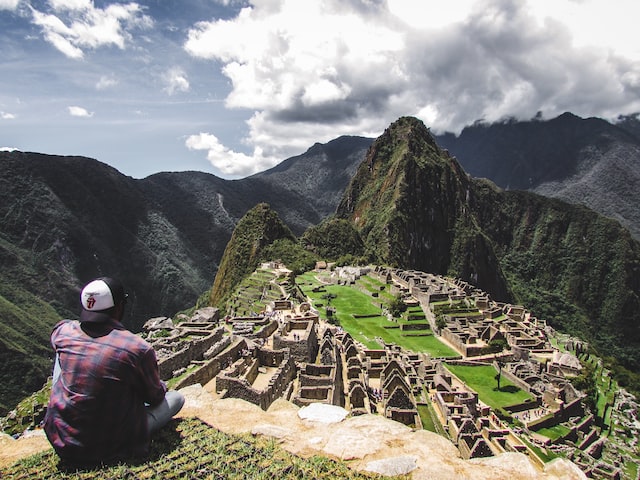

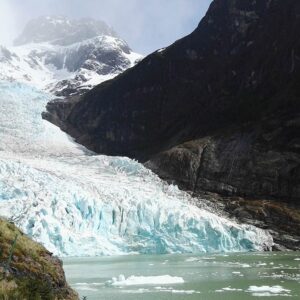
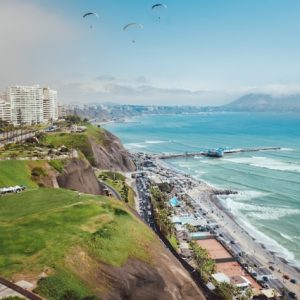
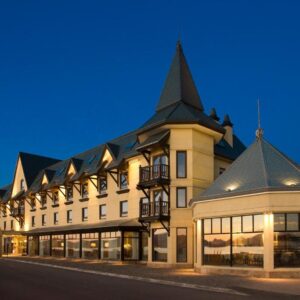
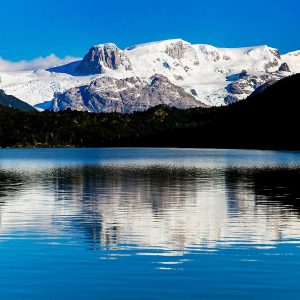
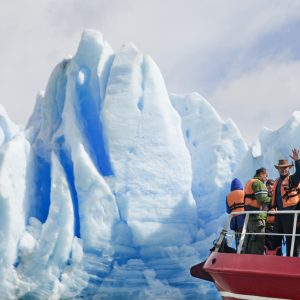
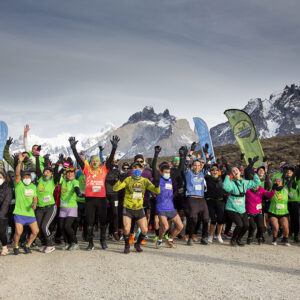
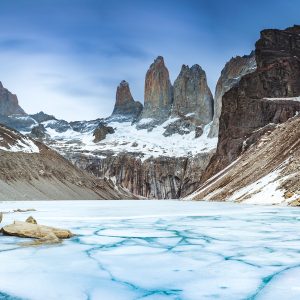
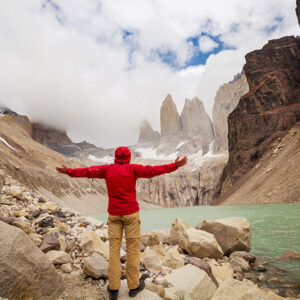
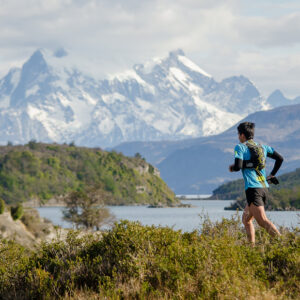
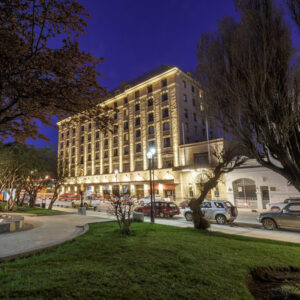
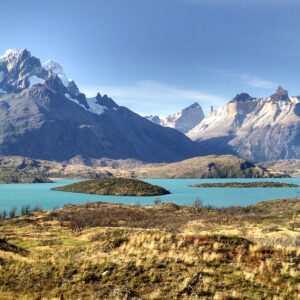

Reviews
There are no reviews yet.